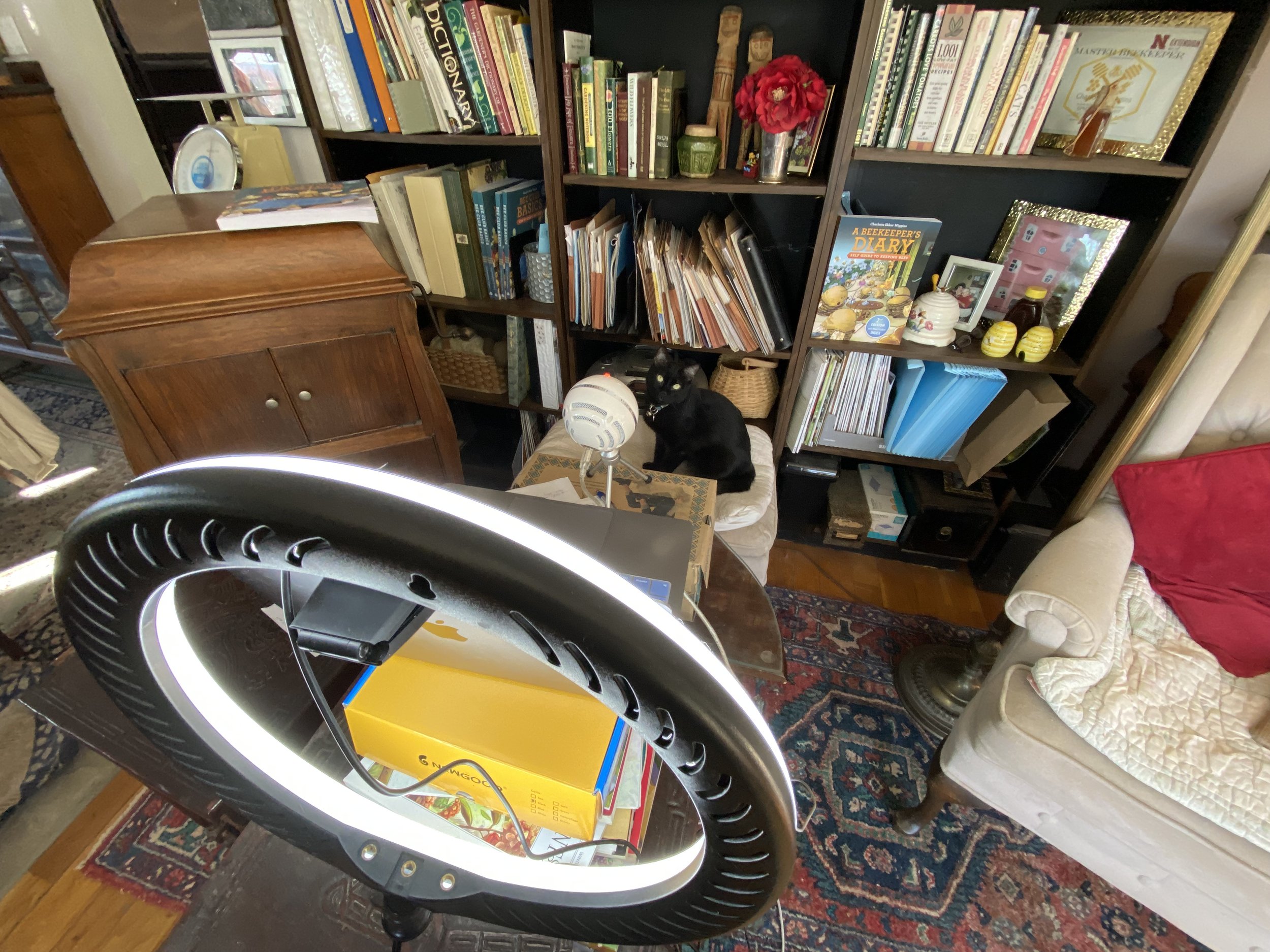Zooming Right Along
/one of the most important pieces of equipment is a furry seat warmer. Somehow they know just when they are needed. (charlotte ekker wiggins photo)
Zooming Right Along
I’ve been getting requests following my online lectures and podcast appearances about how to best set up for doing online meetings and lectures. As a former radio and TV producer, the simplicity and quality of today’s technology is amazing. Whether you are lecturing or having a family chat or reunion online, some key elements remain the same:
Both podcasting and online meetings/lecturing have to have excellent sound. There is no compromising here. Planning needs to go into getting a quality microphone and eliminating background sounds during the recordings and presentations. I have to silence my bonging clocks and entice my cats into the bedroom so they don’t inadvertently participate. Although Shirley Honey could have a fan club for the number of times she’s photo bombed a lecture wanting a treat.
Recently I also had to reschedule a siding company so they weren’t hammering on the house during a podcast. Think ahead to clear your path for a quiet time without competition.
Define your niche. If you are lecturing, develop a quick definition of what you’re going to talk about. Test it for clarity. Check keywords to find what will resonate best with your audience. It may be short but it may take you the longest to define.
I, for example, am at the crossroads between beekeeping and gardening. My lectures, and next book, are about why we need to plant for pollinators. My message started with a TEDx and will continue through my beekeeping reference books. Kim Flotum said I am revolutionizing the way beekeeping is taught. I prefer to think of it as my message is a healthy dose of common sense.
Podcasting/Radio Interviews
If you are the podcaster, plan your episodes in advance and consider scripting, especially if you're new to podcasting. This helps you stay organized and ensures a smoother delivery.
If you are a podcast guest, the host will usually provide a series of questions he/she plans to ask. They usually ask you for suggestions as well.
Think through your answers. Tape yourself delivering them and edit as you listen back. Make it interactive. Don’t go on and on lecturing.
Quality Audio
Invest in a good microphone to ensure high-quality audio. USB microphones like the Blue Yeti. One of my recent podcast hosts recommended Audio-Technica ATR2100x (no paid affiliation)
Recording and Editing Software
Use reliable recording software such as Audacity (free) or Adobe Audition. These tools also allow you to edit your recordings for a polished final product.
Hosting Platform
If you are hosting, choose a podcast hosting platform like Libsyn, Podbean, or Anchor to publish and distribute your episodes.
Branding
Create eye-catching cover art and establish a consistent brand for your podcast. This helps in attracting and retaining listeners.
Online Discussions/Lectures/Presentations
Being comfortable working online was one of the outcomes of our imposed COVID quarantine in 2020. However, it still takes some advance planning to do it well, and particularly well enough if you’re getting paid.
Be Familiar with Your Platform
Whatever platform you are using, understand the features, such as screen sharing, breakout rooms, chats, and Q&A sessions. Practice with a friend, The days of listeners hanging on for long periods as you try to find the chat button are gone. You should at least know the basics. This will enhance your ability to engage with your audience.
Quality Webcam and Lighting
Invest in a decent webcam for clear video. Most computer cameras are low quality and grainy, especially projected on a big screen.
2. Good lighting is also crucial for visibility, so position yourself facing a natural light source. I would also invest in a small light ring.
Quality Microphone
While many webcams have built-in microphones, consider using an external microphone for better audio quality.
Test Your Equipment
Always test your equipment (camera, microphone, internet connection) before the lecture to make sure everything is working well. Also check your weather forecast, sometimes weather can interrupt a good signal.
What to Wear
Remember when you are online you don’t what to wear a color that screams nor one that makes you fade. Try out several options and select 2-3 colors that compliment your seating background.
Record Your Lectures
6. Record your lectures for future reference. You can review for possible . improvements. Someone who missed the lecture will also tend to ask if there is an available recording.
For more gardening, beekeeping, cooking and easy home decor tips, subscribe to Garden Notes.
Charlotte












